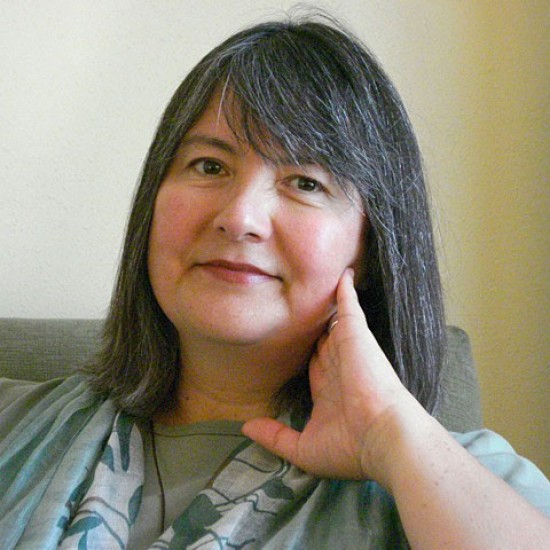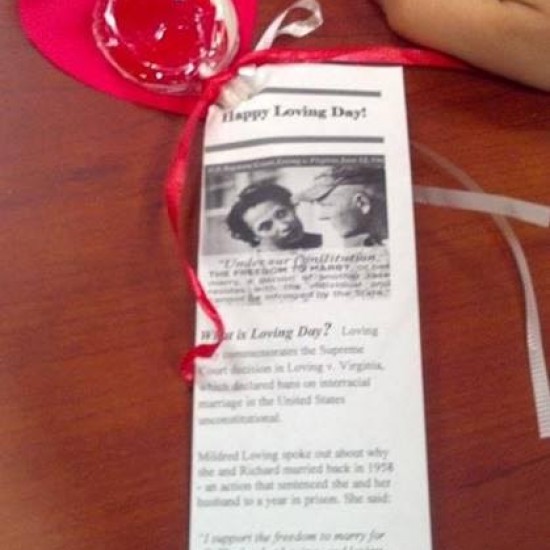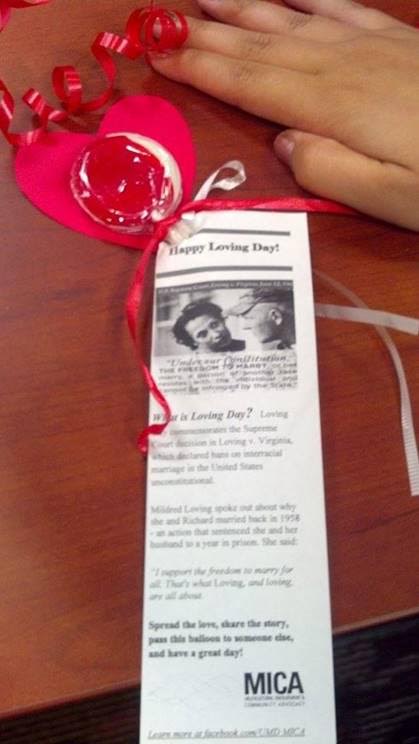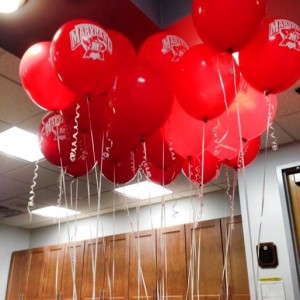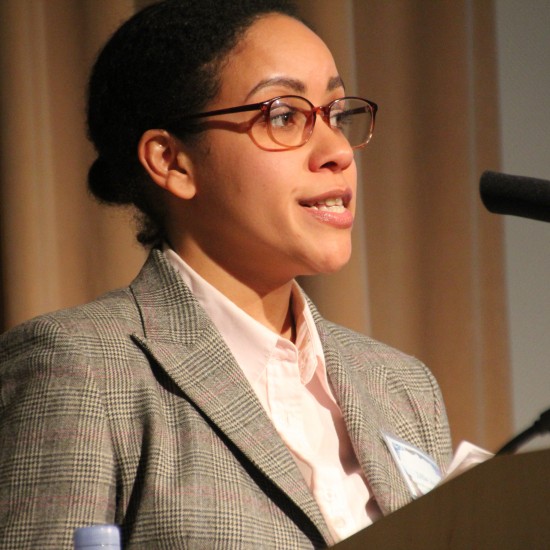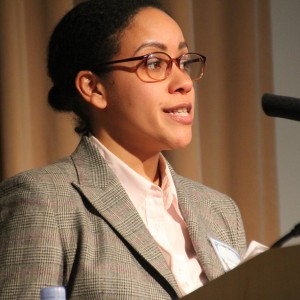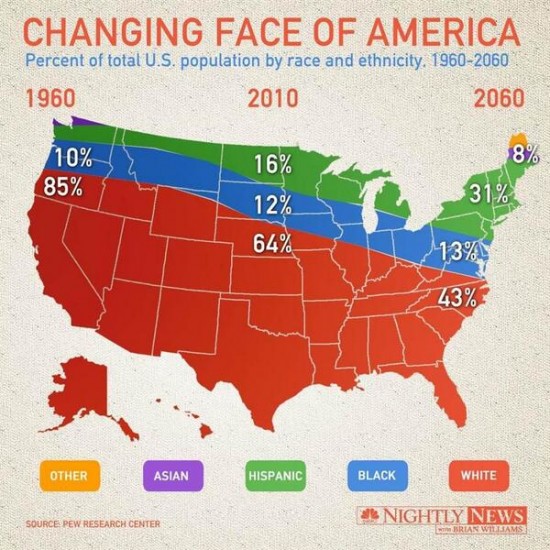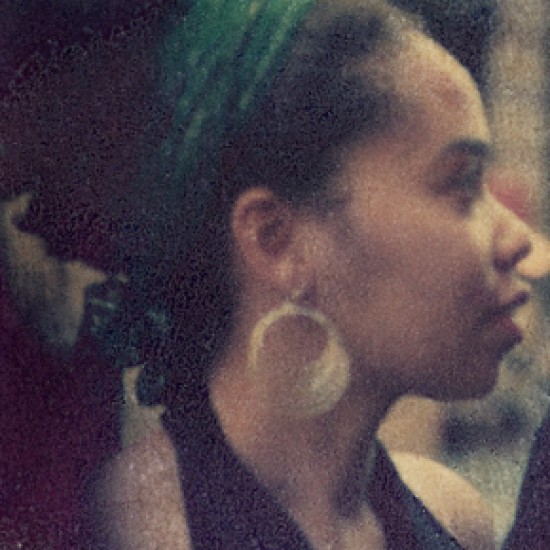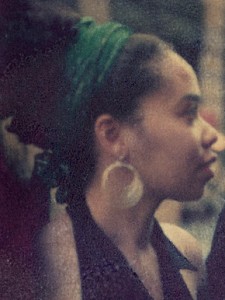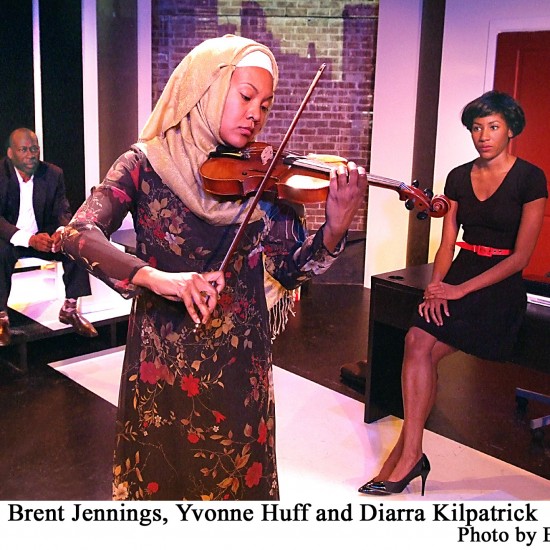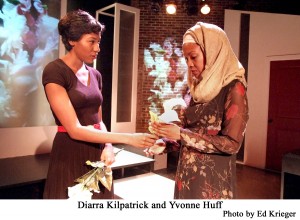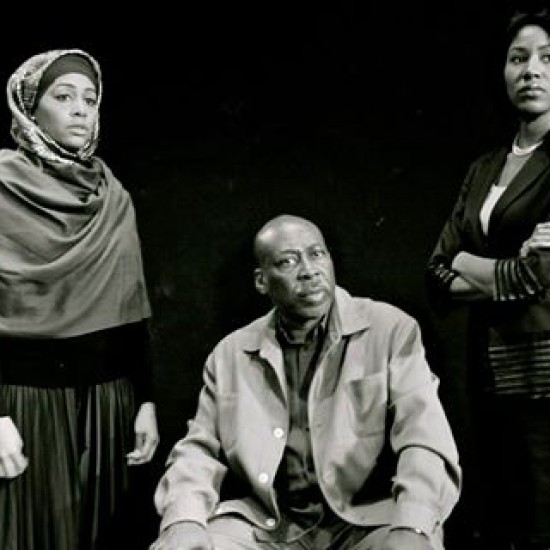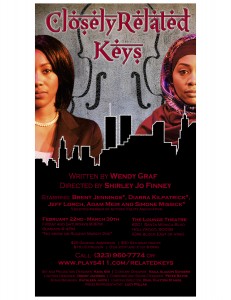The following is adapted from previous posts published at Discover Nikkei and Best American Poetry.
—
“To be hybrid anticipates the future.” —Isamu Noguchi, 1942
Noguchi’s prescient words are manifesting on every level in our time. Just look around you: rigid binaries and categories continue to shift, dissolve, and flow into one another, creating a new “third”. As a woman of mixed heritage I’m compelled by the process that unfolds in this liminal space—a space that isn’t this or that, but is its own realm—a borderland of both/and. It is a space of fluidity and potentiality where all my “selves” are free to be, where I’m beholden to no one culture, camp, or tribe, but can instead move between and among them. It’s an exciting, and destabilizing, time in which to be alive.
The symbolic and psychological meanings of “borderlands”—both internal and external—have been my preoccupation for years. It’s a preoccupation that comes with the territory. I am the daughter of a Japanese mother born before World War II in Tokyo to an upper middle-class family and a French Canadian-New Englander father who grew up during the Great Depression in a working class, bilingual family. My parents raised my brother and me with both cultures in various locations in California, Micronesia, and Japan. This last is why I also consider myself an adult Third Culture Kid—a person who’s been raised in places and cultures other than her parents’ passport country/countries. TCKs internalize aspects of all the cultures in which they’ve been immersed while not having full ownership in any. Consequently, I’m adaptable, curious, restless, and can live pretty much anywhere. My least favorite question is “Where are you from?” because it is impossible to answer. If I were to use a food metaphor to describe my internal experience, Asian hot pot (or nabemono in Japanese) probably comes closest. Although I often felt “other” as a younger person, in midlife I’m finally learning to settle into and appreciate my unique background and have mostly let go of struggling to fit in. I’ve come to learn that I prefer the in-between.
Months after my birth in Kobe, Japan, my father moved us to Southern California and then on to Santa Barbara, Guam, and Tokyo. This regular uprooting, combined with my bicultural upbringing, contributed to my feelings of otherness. In the sixties there were few children like me, even in California, where I spent my first nine years. As a child, I felt I was different from most of the people around me, but didn’t yet understand how or why. Not until I lived for seven years in Guam, where my father taught high school music, and then spent a year of high school in Tokyo did I have regular contact with other mixed and Third Culture kids.
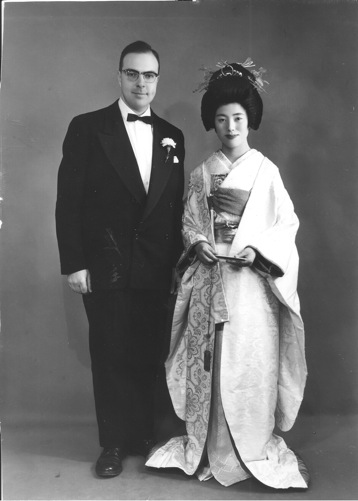 My otherness, I was to learn, is a family legacy. My mother, who left Japan alone as a young woman in the mid-1950s to follow her dream of living in America, and against her parents’ wishes, was not cut from traditional Japanese cloth: ambitious, outspoken, creative, and intellectually curious, she felt constrained by the limited options available to women in post-World War II Japan.My father, whom my mother met in Boston where they were both students, was “other” in his family by being the only one of seven children to attend college and to live outside of the United States.
My otherness, I was to learn, is a family legacy. My mother, who left Japan alone as a young woman in the mid-1950s to follow her dream of living in America, and against her parents’ wishes, was not cut from traditional Japanese cloth: ambitious, outspoken, creative, and intellectually curious, she felt constrained by the limited options available to women in post-World War II Japan.My father, whom my mother met in Boston where they were both students, was “other” in his family by being the only one of seven children to attend college and to live outside of the United States.
My strong-willed mother, socialized in post-World War II Japan, was, paradoxically, also dutiful and self-sacrificing. Like many of her generation, she taught me to read and to play the piano at home by the age of three and before I began any formal study in either; patiently tutored my brother and me to read and write Japanese; and read to us in both Japanese and English. I now marvel that my mother, who struggled herself as an isolated immigrant woman in her adopted country where she was interchangeably devalued and exoticized, managed to do these things for us from her deep sense of love and duty. Her innate strengths, cultural values, and, yes, otherness made possible her later career as an entrepreneur, where she moved easily between diverse business and social groups, successfully negotiating multiple, and sometimes conflicting, sets of interests and expectations.

When we made the rare family trip to Japan, my mother made a point of introducing me to traditional Japanese arts and culture. Among my favorite memories were our visits to the vast, colorful, and cacophonous basement food floors, or depachika, of Mitsukoshi and Takashimaya, my mother’s beloved Ginza department stores. Wherever we went in Japan, I could sense her wordless love for the country and culture she’d left behind. Although it would be years until I could appreciate what she’d given me, I absorbed what she offered until it became a part of me.
My father has said that what saved him from the limited prospects of his Depression-era, provincial, and conservative Roman Catholic upbringing was being drafted to serve in the Korean War. There, as a young soldier living away from New England for the first time, he was introduced to Western literature by his bunkmates who’d attended college. On leave in Japan, my father fell in love with Japanese culture and, much later, returned to permanently live in that country, where he has remained for nearly 40 years, occupying the unique borderland of the long-term expat. After his military service he attended college in Boston on the GI Bill and later completed a Master’s degree in music education, eventually taking a risk by embracing his lifelong passion for directing choral music as a full-time vocation and sharing his passion with an international community of singers and music lovers in Tokyo for 30 years. It’s amazing to me that my father, a man of humble origins, went on to cultivate such an expansive and creative life, despite many early setbacks. His otherness became a resource.
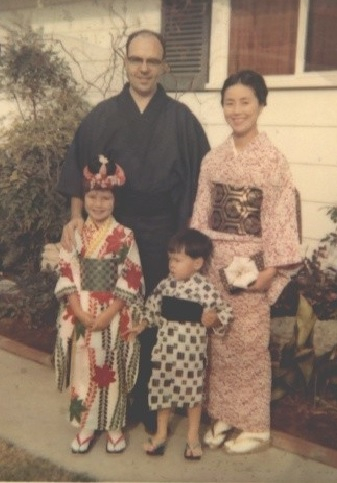
In my early twenties, living in L.A. after college, I began to feel curious about Japan and my Japanese self and moved to Tokyo in 1985. There I worked at tedious jobs, but the visa they afforded and the money I earned allowed me to explore Tokyo, travel within Japan, and socialize with my Japanese friends, who, although they were very kind to me, mostly regarded me as gaijin (“outsider”) and periodically wondered aloud when I would return to my country. People of mixed-Japanese origin—known as hafu, or “half” in Japanese—were not as common in Japan as they are now, and increasingly so. Although I learned much about Japan and valued what I learned, it became clear to me that I would never—could never—be considered Japanese, even if I read, wrote, and spoke the language fluently, married a Japanese man, adopted a Japanese name, and lived there for the rest of my life. After a couple of years of this marginal and marginalized existence, feeling lonely and at loose ends, I returned to the U. S. I now periodically travel to Japan to visit my family in Tokyo and Kamakura when I can. Today, we can see that Japan’s deep-seated and rigid boundaries against “other” are being strongly challenged, both within and without its borders. Dynamism is working against stasis and change is inevitable.
Like many TCKs and persons of mixed ancestry, I have searched all my life for “home”. In late 2012 I relocated to the Los Angeles area after more than two decades in the San Francisco Bay Area and New York City. L.A.’s a good place for in-between-ers like me. In this sprawling metropolis with no center, a place that’s in a perpetual state of fragmentation, disintegration, and transformation and whose population represents every culture and nation, I can enjoy a sense of internal and external spaciousness. But it’s a restless city and its vast size lends itself to tribalism. As a relative newcomer, it’s been challenging to find a place of belonging. But then I’m reminded that, as an adult TCK who’s moved over 40 times since my birth, I’ve always felt this way, no matter where I’ve lived. I belong everywhere and nowhere.
I’m grateful that, in addition to beautiful mountains and beaches, L.A. has a significant presence of people of Japanese descent. When I’m not in Japan—a country that I consider my spiritual home—my primary contact with Japanese culture here has been via my excursions to downtown L.A.’s Little Tokyo. I don’t consider myself Japanese American because that’s an identity, a community’s history, that my mother’s family doesn’t share. The Japanese American experience seems, to me, to be essentially tied to the internment on U.S. soil of American citizens of Japanese descent during World War II. That said, there is something deeply nourishing about spending time in J-town, an urban borderland that’s not America and not Japan, but a liminal space where I find solace—a feeling that’s almost belonging—in familiar objects, images, and food.
These many years later, I am still learning how to make peace with the big questions: Who am I? What am I? And, more importantly, how do I want to be known, first and foremost, to myself? I feel like I’m finally approaching a kind of clarity and hard-won self-acceptance. As a friend recently wrote to me, being mixed seems not just liminal, but is a space of its own that’s not quite defined and maybe never will be. In Japanese British filmmaker Ema Ryan Yamazaki’s excellent documentary Neither Here Nor There, she movingly describes her own struggle to define and integrate the various strands of her mixed heritage and growing up as a Third Culture Kid between Japan and England. Like Yamazaki, I am learning how to be “other” and yet find “home”.
Note: I was re-introduced to the notion of “borderlands”, as it applies to mixed-race experience, by Stephen Murphy-Shigematsu, author of When Half is Whole: Multiethnic Asian American Identities (Stanford University Press).
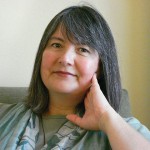 Born in Kobe, Japan, Mari L’Esperance is a poet, writer, and editor and lives in the Los Angeles area. Her poetry collection The Darkened Temple (2008 University of Nebraska Press) was awarded a Prairie Schooner Book Prize. An earlier collection, Begin Here, was awarded a Sarasota Poetry Theatre Press Chapbook Prize. With Tomás Q. Morín, she’s co-edited an anthology Coming Close: Forty Essays on Philip Levine (2013 Prairie Lights Books/University of Iowa Press). You can find Mari online at www.marilesperance.com.
Born in Kobe, Japan, Mari L’Esperance is a poet, writer, and editor and lives in the Los Angeles area. Her poetry collection The Darkened Temple (2008 University of Nebraska Press) was awarded a Prairie Schooner Book Prize. An earlier collection, Begin Here, was awarded a Sarasota Poetry Theatre Press Chapbook Prize. With Tomás Q. Morín, she’s co-edited an anthology Coming Close: Forty Essays on Philip Levine (2013 Prairie Lights Books/University of Iowa Press). You can find Mari online at www.marilesperance.com.

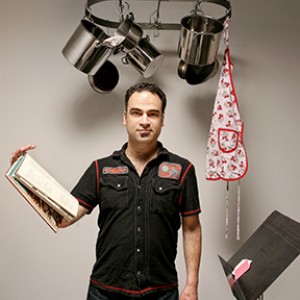 Robert Farid Karimi
Robert Farid Karimi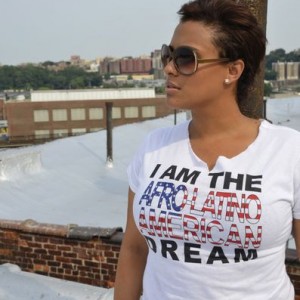 Crystal Shaniece Roman
Crystal Shaniece Roman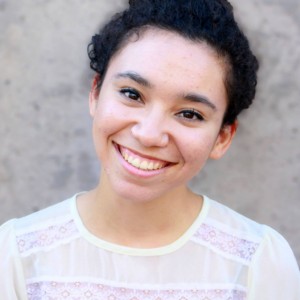 Carly Bates
Carly Bates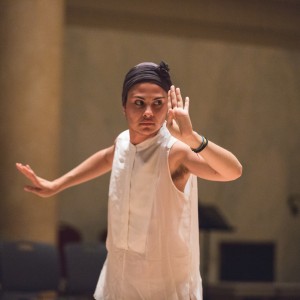 Zavé Gayatri Martohardjono
Zavé Gayatri Martohardjono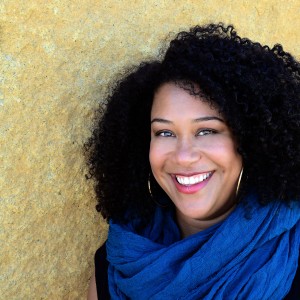 Lisa Marie Rollins
Lisa Marie Rollins Fred Sasaki EAT TO JAPANESE: Achieving ethnic authenticity by eating, shopping, emojis
Fred Sasaki EAT TO JAPANESE: Achieving ethnic authenticity by eating, shopping, emojis